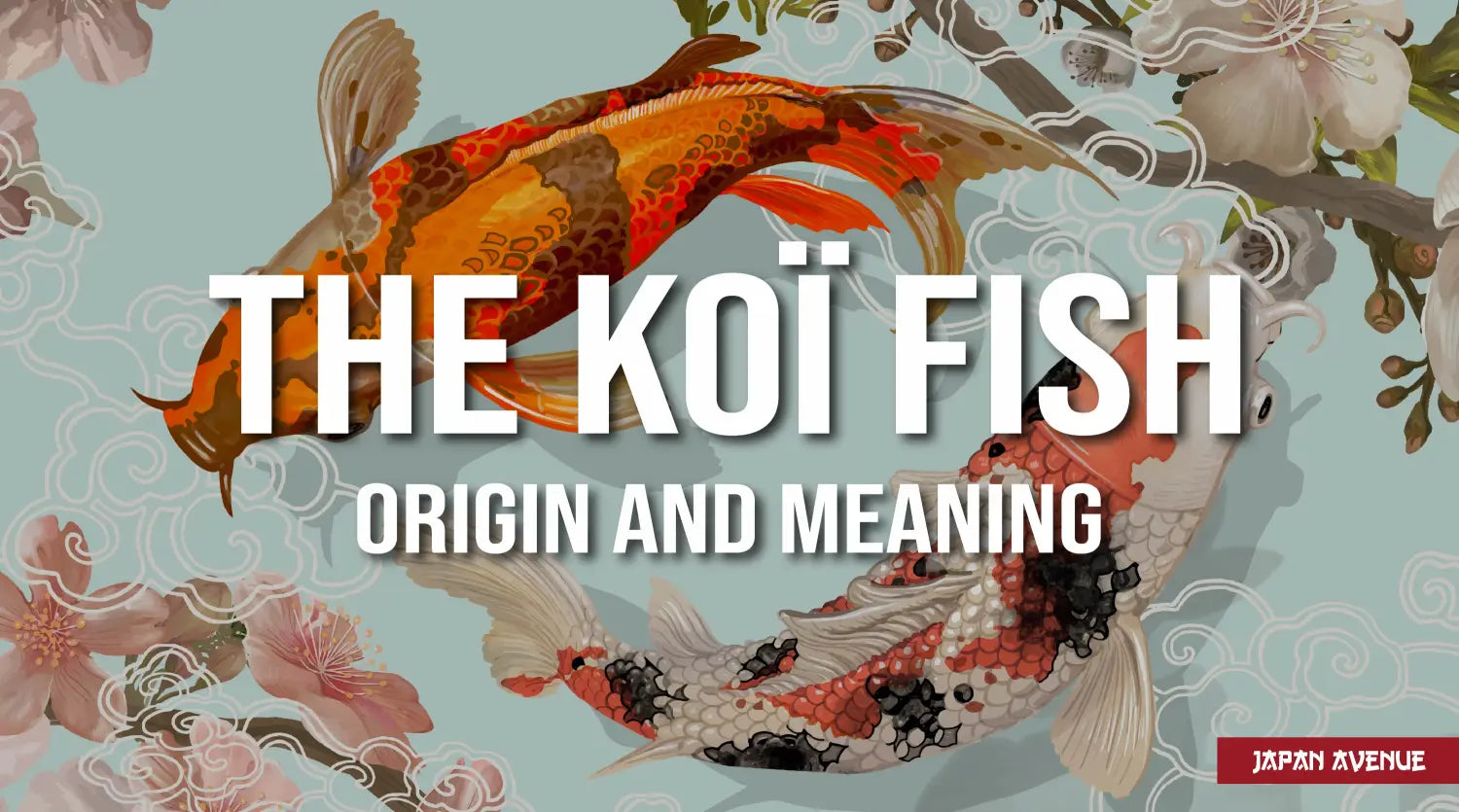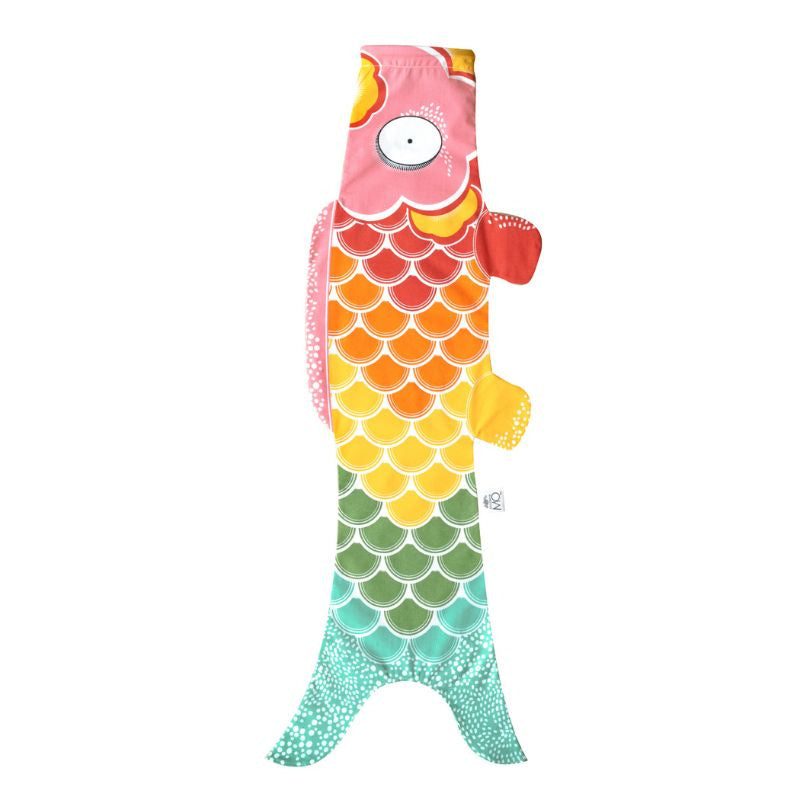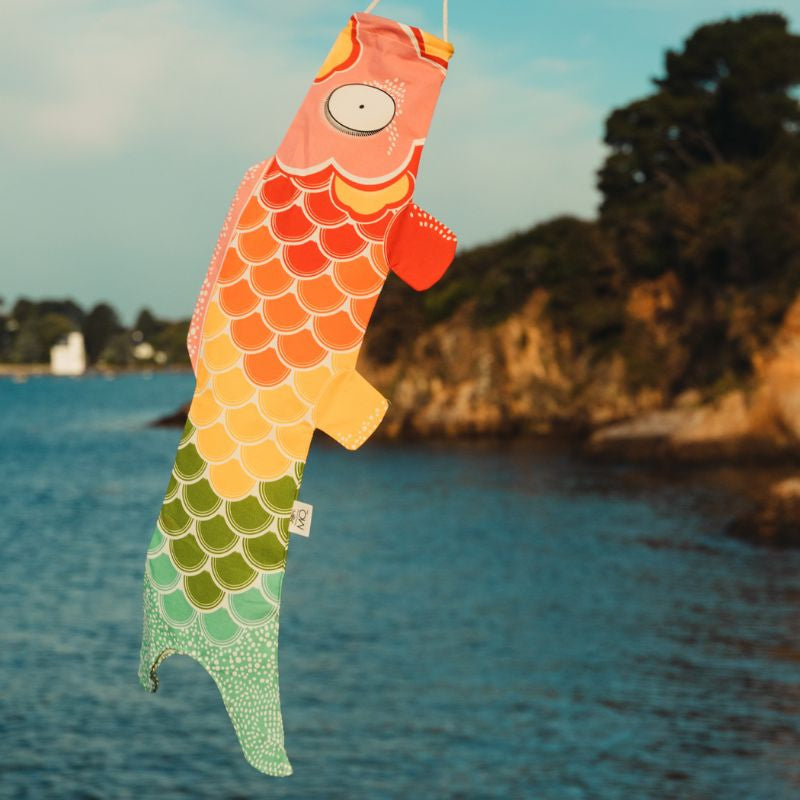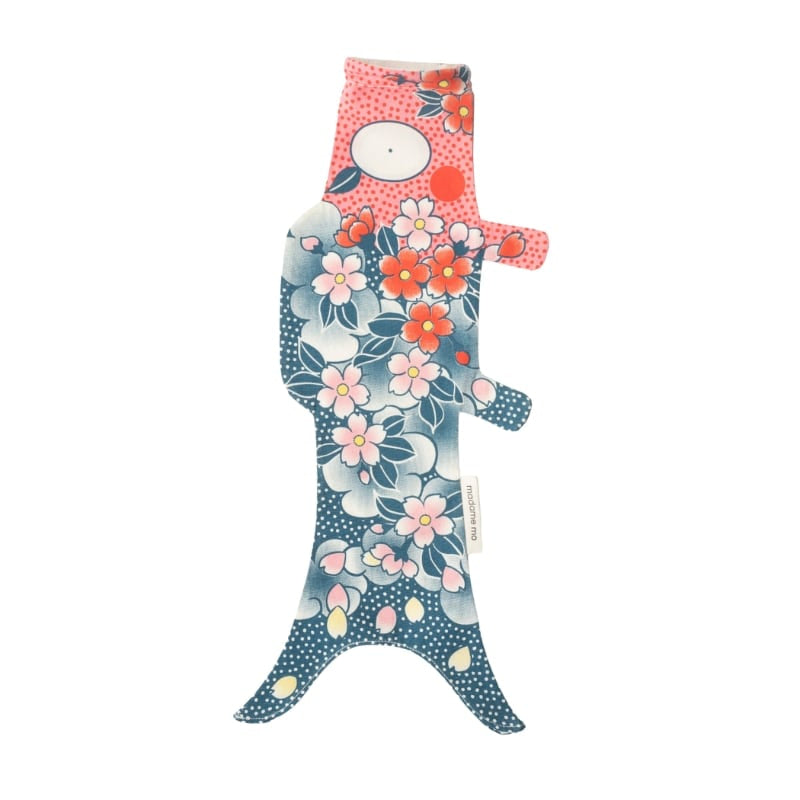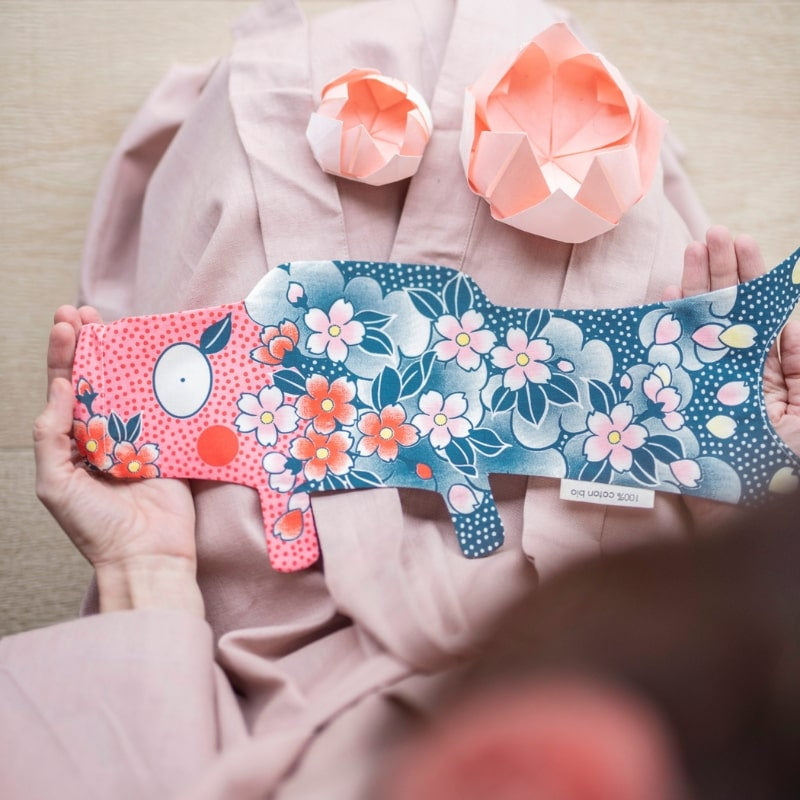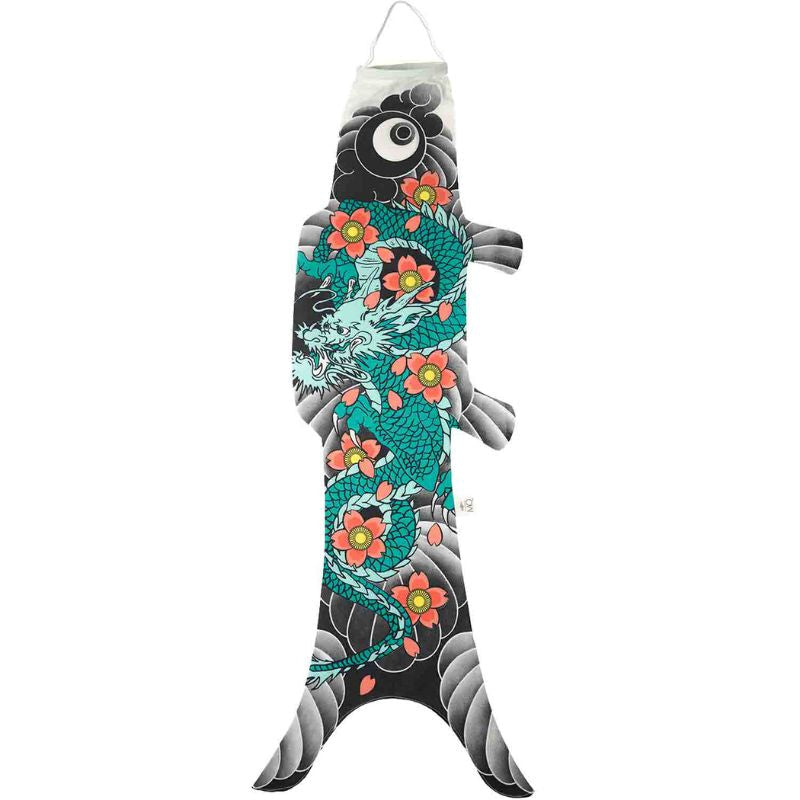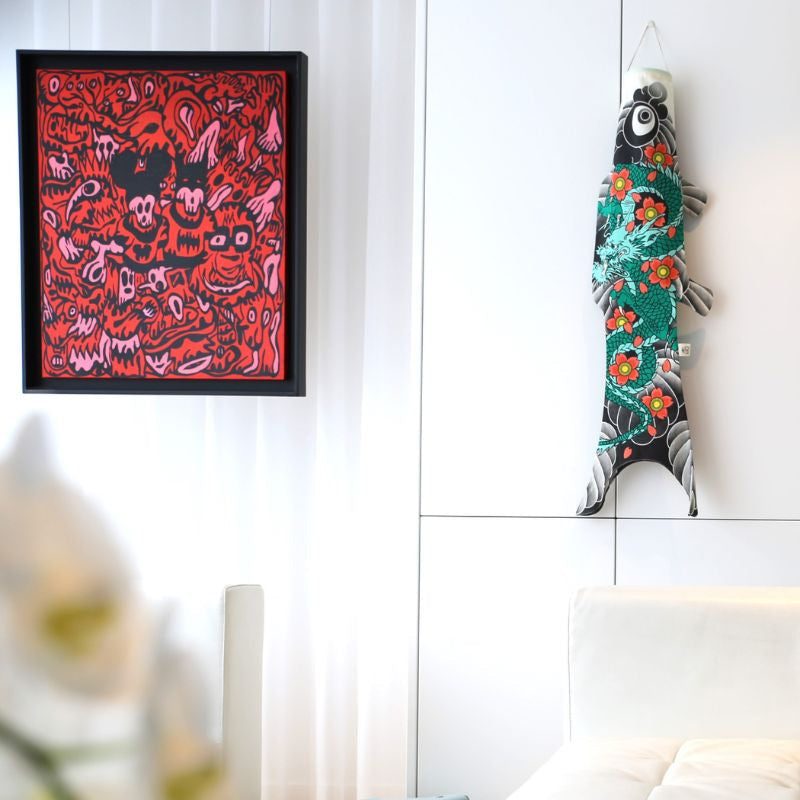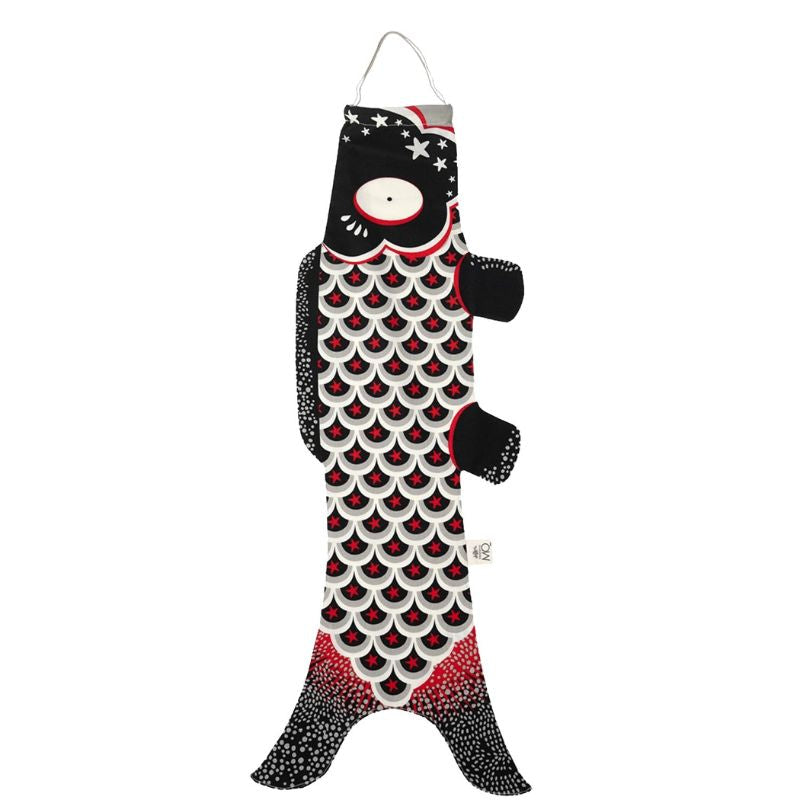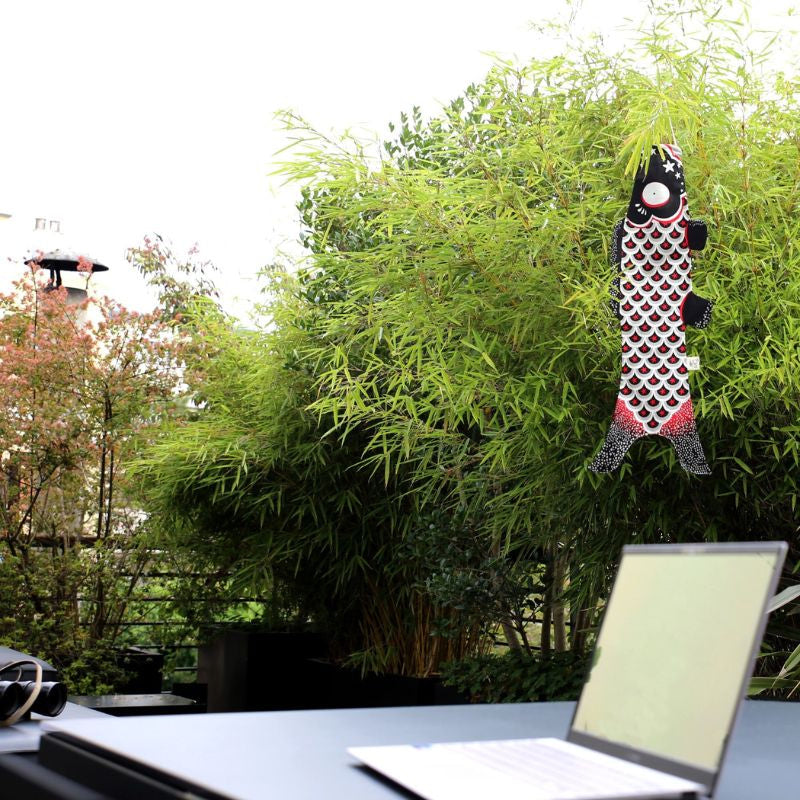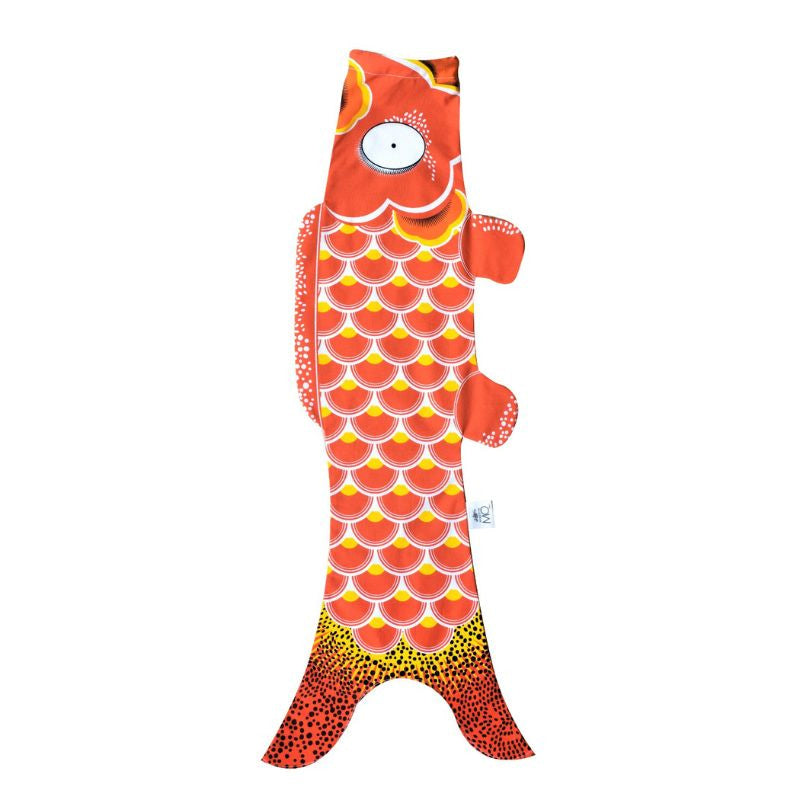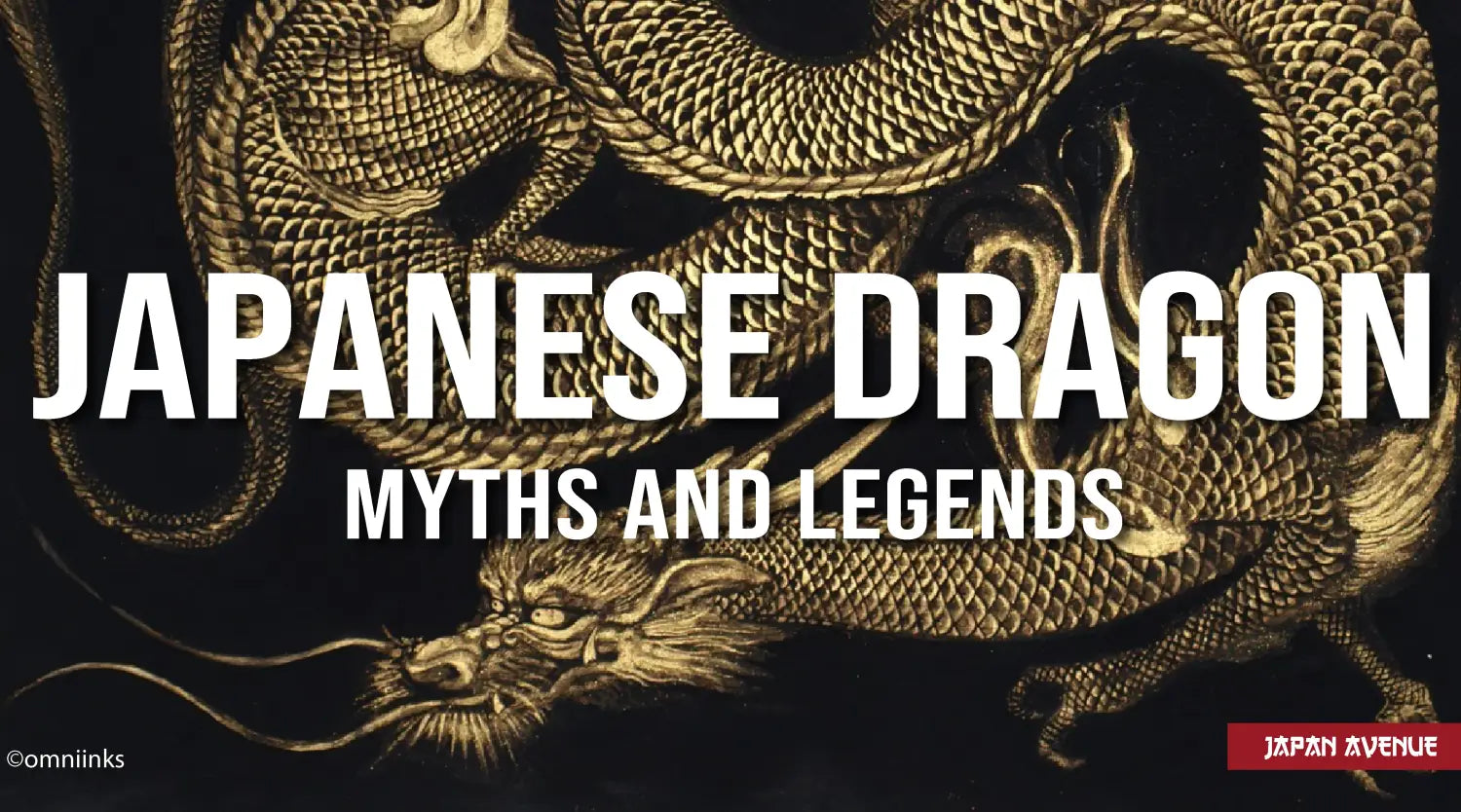👑 Reigning among the ornamental fishes, the koi fish is very much coveted in Japanese gardens all over the world. Its large size, bright colors and longevity are making the koi fish an outstanding japanese animal. But what about the significance of the koi fish in the Japanese culture?
In Japan, the koi fish has multiple significations. This emblematic fish symbolizes courage, perseverance, bravery and love simultaneously. Hence, it occupies an important place in the art of Japanese tattooing as well. A symbol highly appreciated in the Japanese culture.
Inheritance of a cultural patrimony, this emblematic Japanese fish is a great pride in the archipelago and particularly in the village of Yamakoshi, which is its birthplace. This fish also frequently appears on Japanese prints as well as on paintings of great Japanese masters, just to tell how much this fish is admired.
Learn more about this legendary and colorful fish in this article! 👇
Origins of the koi fish in Japan

The earliest accounts of the Koi carp date from the 5th century BC. This beautiful fish was raised in China and Korea before arriving in the archipelago where it was first introduced in the Niigata province.
It originally was a common carp of dark colors imported into the territory during the Sino-Japanese invasions. For centuries, the residents of Japan raised carps in ponds that feed the rice fields, mainly to diversify their diet.
| ❓ Did you know? The first specimen of koi or kohaku appeared in the 19th century, following an unexpected chromatic mutation. It first resulted in red, then white and finally bicolored individuals. The carp became appreciated for their bright colors which gave them aesthetic qualities. This was the beginning of the breeding of koi fish for ornamental purposes, which after several crosses gave birth to a hundred varieties of carp throughout the province, with yellow, orange, red and black colors. |
In Japan, they are called "Nishikigoi" (colored fish) and are reared with passion, especially in the village of Yamakoshi which has become its muse. This place is known to be the best koi fish farm in the world with the most coveted species. No doubt that the local breeders take good care of them. They are kept in fish pools in the winter, and return to the ponds in the rice fields when the weather improves.

In 1914, the koi were popularized due to a big exhibition in Tokyo where 8 koi were offered to the emperor. Victims of their success, these freshwater jewels were exported to all four corners of the world.
Nowadays, koi fish have gained a special value. Collectors are always on the lookout for the rarest varieties and may buy these fish at auctions for exorbitant prices reaching up to two hundred thousand dollars 🤑.
Among the sought-after species, the tancho carp is very appreciated by the Japanese for its white color embellished with a red spot on the head which reminds the flag of the country.
Characteristics of the koi fish

This legendary animal can grow to a spectacular size of up to more than one meter for a weight of about 15 kilos! 😮
These big fish live in schools and are quite sociable with other freshwater fish species. They need large spaces to survive, which is why they are not seen in aquariums but in outdoor ponds.
Koi carp are omnivorous and mainly feed on algae and plants in the muddy bottoms, which they detect with their barbels. They also eat small molluscs and insects. More the water temperature is raised, more the carp eats and becomes larger. Did you know that they can even come and eat out of your hand, if you habituate them?
❄️ In winter, when temperatures cool down, they protect themselves from the cold by hiding under the mud in semi-hibernation mode.
The koi carp lives about 20 years on average even if some individuals can reach up to 70 (!) years. 😲
The legend of the koi fish swimming upstream the Yellow River

Here is a Japanese legend that parents love to read to their children in Japan. 📖
"Each year, at the 3rd moon, thousands of koi leave the sea to swim up the Yellow River. By bravely flapping their fins, they swim upstream against the current and meet at the Dragon Gate waterfall. This waterfall is said to be of such strength that it's swifter than the arrows of a hundred warriors.
To succeed in their journey, the koi fish faces many obstacles, braving predators, the force of the stream, fishermen and many other dangers. Among them, only the most reckless manage to reach the top of these violent waterfalls. Once there, they transform into dragons with magnificent golden scales. Those who failed to do so, will repeat the experience year after year."
They are quite motivated, these carps! A beautiful example of perseverance to follow, especially at school. 🤓
💡 This legend also inspired the famous Pokémon named Magikarp.
Symbol and meaning of the koi fish

The koi is known to be a source of peace and serenity in Asian gardens. On a spiritual level, it embodies strength and perseverance to face life's challenges and to move forward.
Did you know that the Japanese students are offered koi fish cards for luck at their exams?💯
In Japanese culture, it also represents social ascension, particularly marked in the 21st century. Symbol of virility and strength, the koi fish is very present during the Kodomo no hi ceremony formerly known as Tango no Sekku. This is a children's festival that takes place every May 5th in Japan.
Particularly involved with little boys, this festival has its origins in the Kamatura era, where the young sons of samurai received their first armor. Today, the ancestral ritual persists to proudly symbolize the place of the young man in their society.
| ℹ️ During Kodomo no hi, the Japanese hang Koi carp-shaped pennants that represent the whole family swimming against the current. The father is represented by a black carp, the mother is similar to a red carp and each child has their own unique fish. |
This tradition is supposed to bring good luck to the family and set an example of courage for future generations. During this day, the children are bathed in iris baths to perpetuate the chivalrous spirit of the father and sometimes they may drink sake. 🍶
Koi varieties and symbolism

In Japanese symbolism, there are many different types of Japanese carp.
- For health and longevity, opt for a Chagoi, a single-colored carp without metallic sheen.
- For spirituality seekers, 🧘 the black Utsurimono carp with colored spots will be a perfect choice.
- In need of money? 💰 Go for a golden koi or Yamabuki carp.
- As an honor, prefer the Tancho with its red spot reminiscent of the Japanese flag.
- The Benigoi, an intense red colored carp, is the symbol of a passionate love.❤️
- Lastly, to bring you luck🍀 and happiness, consider the Kujaku carp.
What does a koi fish tattoo mean?

The tattoo can have several meanings depending on its coloring, its sense and the elements that accompany it.
Against the current, the tattoo reminds us of the courage and perseverance of these fish that swim upstream during the spawning period, as the legend of the Yellow River says. The koi fish symbolizes ambition, tenacity and willpower towards the daily difficulties and more important trials of life. 💪
By its peaceful nature and its gregarious instinct, they also evoke love, the bond with others and more particularly with family. It is also associated with fertility and children because of the numerous eggs it lays. Lastly, this colorful fish points out the path to follow in order to fulfill its destiny.
The symbolism of the koi fish has no more secrets for you!
After reading this article, you will understand more clearly the attachment that the Japanese have for the koi carp, this legendary fish which beyond its aesthetic qualities embodies beautiful spiritual values.
👉 The koi fish fascinates you? Find yourself in the values carried by this colorful fish?
If that's the case, don't forget to visit our store for a wide range of products featuring this legendary fish.

